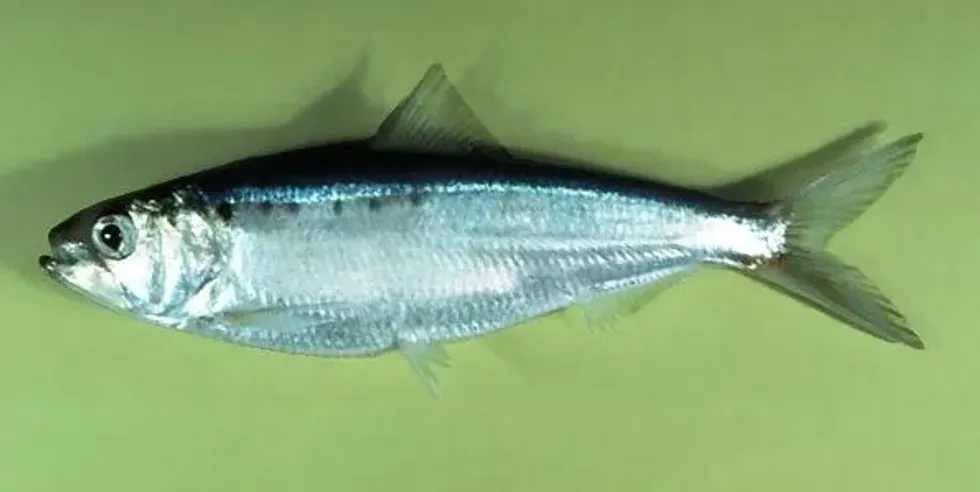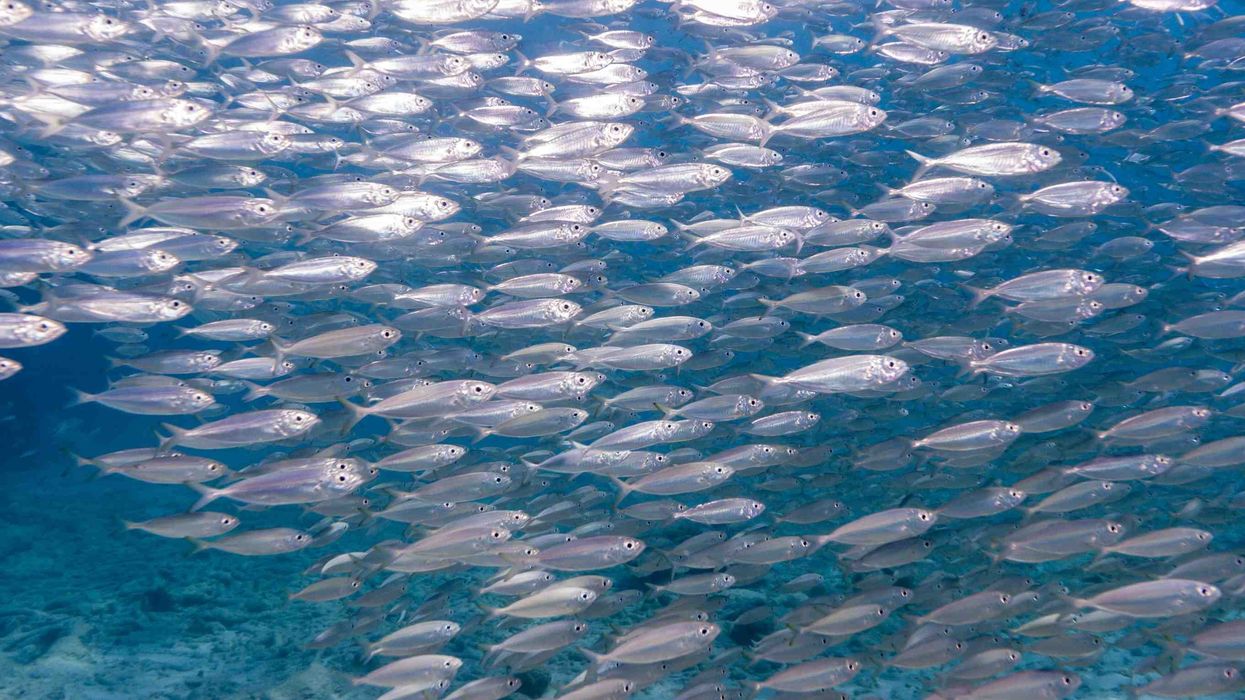The American shad is one of the major fish found in American freshwater rivers. The shad, scientifically known as Alosa sapidissima, belongs to the species of anadromous clupeid which is naturally distributed all over the North American Atlantic coast.
These fish are closely related to the other North American shads. It is known as 'the fish that fed the nation's founder.' This is the description with which the American shad is popular in America.
These fish usually spend most of their life in Atlantic waters, that is why they also are called Atlantic shad. Other than that, American shad may swim up freshwater rivers to spawn, also called the migration period.
The fish are very hard to find in the winter because they go to deeper water before the spawning season. These fishes can be seen in different rivers across America such as the Connecticut River, in which the American shad run far upstream.
Shad fishing is common. The male shad is said to be an excellent game fish and can show different kinds of jumps. Getting on to the physical description of the fish, it is quite simple.
The species have sharp scales similar to that of a saw over their stomach and chest. The body is compressed and has a dorsal that is blue and metallic in color and a white ventral surface.
The adult American shad populations spawn in rivers during late winter. This is a basic introduction, so read further for more interesting American shad fish facts. You may also like to read tilefish and giant oarfish facts once you're done with this.
American Shad Interesting Facts
What type of animal is an American shad?
The American shad (Alosa sapidissima) is a type of fish species commonly found on the Atlantic coast. These belong to species of anadromous fish.
What class of animal does an American shad belong to?
As all the fish naturally come under the classification of Actinopterygii, the American shad (Alosa sapidissima) fish also belongs to the same category. The populations are commonly and collectively known as ray-finned fishes.
How many American shads are there in the world?
There isn't any exact or specified data for the total number of American shad fish present in the world.
Where does an American shad live?
These freshwater fish usually prefer to live in temperate areas, so they are commonly found in the north of the tropics and south of the coast. The American shad fish are mostly seen living most of their lives near the coasts of the Atlantic or Pacific Ocean or Bay.
Only for the time of breeding also known as spawning do these fish tend to travel/migrate into the rivers of the United States, Canada, or Mexico to lay their eggs.
What is an American shad's habitat?
Talking more about the temperate American shad habitat of the fish, we can say that they can swim more than 19,000 km in their lifetime.
So usually their habitat changes with respect to the time of seasons known as the migration period.
The American shad is seen swimming during the time of summer and fall in some of the coastal waters or near the coast generally at depths from 0-250 m. And in the time of winter, they can be seen to migrate in deeper ocean waters away from the coast at depths up to 375 m. With this, we can conclude one thing, that these fish prefer migration as a major part of their life and at the end of the winter they tend to go to near rivers to spawn.
Who do American shads live with?
American shad may live with the other shad fishes. Usually, they prefer to live in a large number of fish known as a shoal. Mostly the shoal is formed to surround the young American shad fish from predators or from fishing.
How long does an American shad live?
The lifespan of the shad fish in wild is expected to be around nine years if not hunted or got caught in fishing. As they migrate a lot, which also affects their body in the long run due to all that traveling, many of them die during the traveling.
An estimate of 60% of the females dies during the migratory period. When they are in captivity, they are seen living up to six or seven years. The oldest living shad attained an age of 11 years in Maryland.
How do they reproduce?
The reproduction process is known as spawning. Usually, these fish migrate during the time of winter for the process of spawning.
The common shad fish like places such as Chesapeake bay, and freshwater rivers in the United States, Canada, and Mexico to lay eggs or complete the spawn. The females are chased by the males to complete the spawn which is known as spawning runs.
Males have to nudge the female so that she can release the eggs in the open water, then male fertilize the eggs in the water.
The eggs sometimes float in the water getting separating for kilometers before they hatch. American shad spawn once a year which is totally dependent on the season.
The female lays around 2-150 eggs each season in a cycle while reaching the exact rivers and the cycle can last up to a week. After laying eggs for once they take a rest for around two to three days then again start laying.
What is their conservation status?
There isn't much information about the conservation status provided for the respective fish. Though, the American shad comes under the Federal Trust fish, which means the Federal government has some or the full responsibility for restoring the fish.
American Shad Fun Facts
What do American shads look like?
Let's talk more about the looks and description of the fish. The species have sharp scales similar to that of a saw over their stomach and chest.
They are mostly thin from side to side and from bottom to top. You can see a row of black spots over their bodies specifically on the shoulder, sometimes they have two rows of it. During the time of spawning and laying eggs the color of their skin gets darker, and this mainly happens in rivers.

*Please note, this is an image of a Twaid shad, a related fish from the Alosa genus.
How cute are they?
We don't think people would be considering them as cute fish, though young American shad can be described as cute at some point.
How do they communicate?
There is a way with which these American shad communicate to each other - they can hear sounds of frequencies ranging from 180 kHz, which is also used to escape from predators by making this sound in high frequency with each other. Males communicate with females by nudging their bellies for spawning.
How big is an American shad?
Comparing with other species, the American shad (Alosa sapidissima) are known to be great ones in size, all over North Carolina especially. American shad are 55.9 cm long, but they can be anywhere from 45-76.2 cm long.
How fast can an American shad swim?
Though there isn't any specific information about the speed with which the fish can travel, one thing we can say is that American shad swim with a great speed. First of all, they are continuously traveling from rivers to rivers to spawn and on the other hand, they have to save themselves from fishing.
How much does an American shad weigh?
In weight, these American shad are quite bulky. They weigh 2.5 kg, but they can weigh anywhere from 0.9-5.4 kg. Males are less in weight in comparison to females. The juvenile shad or small shad also becomes quite bulky within months after being hatched.
What are their male and female names of the species?
The American shad male and female have no names specified for their genders.
What would you call a baby American shad?
Juvenile American shad would be a great name for the baby American shad.
What do they eat?
The eating habit of American shad is a little bit different for an adult American shad and juvenile ones. The juvenile American shad can have both animals and plants.
Mostly, it involves larvae of insects and zooplankton. Usually small fish eat a lot after getting born or hatch out of eggs. In the case of adult shad, they eat small fish, crustaceans, plankton, worms, and occasionally fish eggs.
Are they eaten by humans?
Yes, they are widely eaten by humans and are also popular for American shad fishing for their meat and eggs. Their meat is also very popular in most of the regions of the east coast.
Would they make a good pet?
Normally people don't pet the American shad because of their big size. Adult American shad are not that popular for being a pet. You could have little or young shad fish as a pet if you really want to have these fish as pets, but they would soon grow to quite a large fish.
Did you know...
The name 'shad' has been taken from an Old English 'sceadd' which means 'herring'.
These fish were introduced in the 1800s to the Pacific Ocean and now there they specifically live.
American shad have an ability to detect ultrasound, which helps them to get them safe from the predators such as one of their major predators, dolphins. The American shad can hide or flee.
They are the biggest fish of the herring species. Their Latin name, 'sapidissima' means 'most delicious.' American shads are also very high in proteins such as Omega-3 fatty acids.
Along the east coast of the US, certain towns host shad festivals. In Connecticut, these are the towns of Essex and Windsor. This state also has a shad museum! In Lambertville, New Jersey, and on the Delaware River across from New Hope, Pennsylvania, there are also shad festivals.
If you want to catch some American shad, you can use live baits including worms, small minnows, and grubs although, artificial lures can actually be more effective as well as being more economical. Shad taste nice coated and fried once you've caught them.
Do American shad have teeth?
No, the shad has no teeth on the roof of the mouth. Specifically, adults have no teeth at all, although young shad have small ones in the jaws which may remain until the fish is a foot or so long.
What is the difference between American shad and salmon?
There are some major differences between the American shad and salmon fish. Unlike Pacific salmon, not all shad die after spawning, and also in comparison to salmon, the adult American shad have nearly twice as much per unit weight as wild salmon.
Here at Kidadl, we have carefully created lots of interesting family-friendly animal facts for everyone to discover! Learn more about some other fish including white cloud mountain minnow, or Pacific salmon.
You can even occupy yourself at home by drawing one on our American shad coloring pages.










